We're an affiliate
We hope you love the products we recommend! Just so you know, we may collect a share of sales or other compensation from the links on this page at no additional cost to you. Thank you if you use our links, we really appreciate it!
One of the most challenging parts of being a pet parent is training your puppy to pee in the right place, but what is the best way to potty train a puppy? Read this article to get the comprehensive guidelines for potty training them.
You’re finally bringing home your new puppy, or you will be relocating to your new house, and you’re bringing your canine buddy over.
That means one thing, new surroundings, new routines. It’s an exciting milestone for you to bring your new furbaby home, but this also comes with challenges.
One of the primary and most prominent challenges that you have to face is potty training or house training your puppy. Some puppies will learn quickly, whereas others will struggle with it for some time.
Potty-training your dog or puppy requires commitment, patience, and consistency. Accidents are part of the training, but if you follow these step-by-step guidelines, you can get the newest member of your family on the right track in a few weeks.
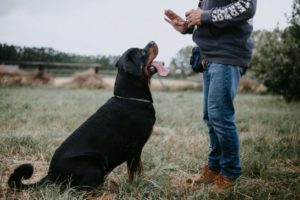
In this step-by-step guide, we will be helping you with giving you and your puppy a stress-free potty training process.
What are the Factors in Potty-Training your Puppy?
On average, it takes 4 to 6 months for a puppy to be potty-trained completely, but some puppies may need longer, from 6 months to a year, depending on its breed and size.
For example, bigger breeds have bigger bladders and lower metabolisms, which will require less frequent trips outside. They will take longer to be potty trained.
Before starting your puppy with potty training, do thorough research about their breed, behavior and find out how long they can hold their pee based on age. The smaller the dog is, the smaller their bladders will be. The best example of a little dog that pees more frequently is chihuahuas.
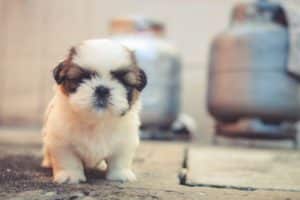
Your dog’s previous living conditions are another factor. With new surroundings to keep in mind, they would need some time to adjust themselves, and that includes their potty routine.
If possible, you may want to bring along things that may remind them of their previous home, like a dog bowl, a bed, or his chew toys.
And while your puppy is undergoing training, do not get worried if there are obstacles. As long as you stay committed to a consistent and reliable training routine.
This routine includes teaching your furbaby at the first potty cues, determining when he needs to go and offering him rewards and positive reinforcements.
When is the Best Age in Engaging Your Puppy in Potty Training?
Pet specialists suggest that you begin potty-training your puppies when they are between three and four months old.
During those ages, they have enough control over their bladder and bowel movements to learn to hold it for some time.
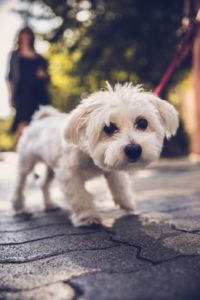
If your puppy is older than four months when you bring him home, and he’s been defecating in his cage (and possibly eating his waste), potty training may take longer. You will have to re-adjust the dog’s behavior using encouragement and rewards such as doggy treats.
Methods of Potty-Training Your Puppy
When determining how to potty-train a puppy or a newly adopted dog, you have two choices— train them to get rid of waste outdoors or inside your house on a pee pad and then move them to the outdoors.
This section will guide you through both options and give you guidelines to include crate potty training into your plan.
Beginning with the Basics
Before we get into those two options, let us go back to the beginning, where it all starts. This way, we will know which of the two methods is more appropriate and easier for your puppy.
1. Familiarize your puppy with their new home, household, and role. Think of it as when you are new to a particular place or group of people; your new pet may be overwhelmed with curiosity, enthusiasm, or distress.
2. Once you have settled down in your new home, your puppy should too. In this period, you should be able to assist them in adjusting to their new surroundings and environment. It is crucial to set and know the expectations.
3. Show your puppy the areas where they are allowed, such as the living room and the backyard. It is advisable not to let your new puppy explore on their own, especially if you don’t want them to release themselves in certain areas. For example, if the kitchen or bedrooms are off-limits, close them off and do not let your puppy explore there. Always close the door or install a doggy fence on said areas.
4. Always maintain a safe distance with your puppy. While potty training, it is recommended to keep your puppy in eyesight, this way, you will prevent unwanted accidents. Watch out for the signs when your puppy is about to go, such as circling around in one area, barking, scratching furiously, and sniffing.

5. If you see your puppy while urinating or defecating indoors, create a sudden noise such as a clap, and say the word “no.” Then, take the dog outside. It is crucial to startle the dog, not scare them. Whenever this accident happens, make sure to use a consistent command and noise.
It’s important to wait until your puppy is fully vaccinated before taking them outside for potty training or socialization with the environment.
6. Never give bad reinforcement to your puppy for these kinds of accidents. Your dog does not know it is doing something wrong. They will possibly forget and could potentially become afraid of you.
7. Determine a potty place either inside or outside your home. It is best to pick a specific area, if you choose indoors, then you need to get a pee pad and take your dog there every time it needs to go. If you choose outdoors, try to choose a specific spot that is not frequented by other dogs and is easy to clean up.

8. Consistency is the key, puppies do best on a regular schedule. They have a scheduled routine on when to eat, when to sleep, and surprisingly when to get off. According to animal behavior specialists, a puppy can control their bladder for about an hour every month of their age.
9. If your puppy is about three months old, they can hold it for three hours. Don’t go longer than this period between potty breaks or they’re sure to have an accident. The following are the best time to take your puppy to get off:
- When they wake up: Once your puppy is up, get him into his potty place immediately in case they need to pee.
- After eating: Most dogs have the urgent need to release after eating. It is recommended to bring them outside 5 to 30 minutes after they’ve eaten.
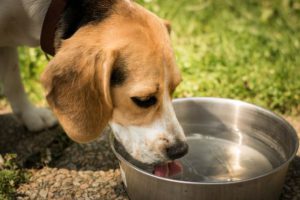
- After playing: The good thing about this is they could be playing in your yard, so the potty place is just nearby.
- After napping: The same thing with waking up, they will have the urgency to pee, so you have to bring them outside.
- Before bedtime: After a day of being active, it is advisable to let them pee first before they go to sleep.
Remember that consistency is key. Once they are used to this routine, you and your puppy will not have a hard time following this schedule.
1. Make taking a potty a comforting and satisfying event for your puppy to do. Encourage your dog to hold and wait until you let them go for a pee. Keep in mind that positive reinforcements are right for your dog’s behavior. Always praise your puppy when it uses the designated potty area. Use a cheerful voice that lets the dog know that they did a great job.
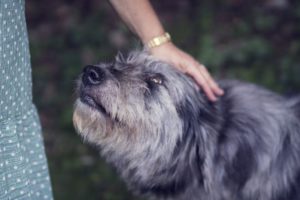
2. Clean up accidents immediately. When your dog has accidentally gotten off indoors, it is essential to clean the area thoroughly. This will help prevent your puppy from wanting to pee again in the same place.
Commanding Potty Cues
What if we tell you that you can teach your dog to pee on cue? Seems impossible, right? Well, luckily, this is possible by undergoing your puppy on training to potty on command.

Most dogs that undergo training are for the betterment of their behavior. This training includes teaching them to do the actions in a specific place and time we want it to be done.
The more often a dog does within that particular behavior, the more likely you have to train him to do that specific action where and when you want him to. For this example, peeing or relieving them.
Training your puppy is teaching a dog to relieve using cues you choose. Your dog may be already using cues from his environment to figure out if and when it’s time to go.
The smell of pee on a post could be a cue, or the sensation of a potty pad under their paws, for example. All you have to do is add an established cue, and then tell your dog he’s a good boy for understanding it.
Follow these steps to achieve this fantastic commanding technique:
- Select a word that will signal your puppy that it’s time to go.
You can use a simple “go potty” or be as extra as you like, such as “puppy poop time”. It doesn’t matter what you use as the cue word as long as it will be consistent and to be used regularly. It is also essential to remember that taking a pee and pooping are two different things, so you can use two separate commands for these.
- Observe your dog daily and figure out which time of the day they usually go off.
If your dog has just woken up from a nap, just finished with his playtime, or you’re letting him out of their crate for the first time in a while, there is a great probability that he will have to go.
Setting a feeding time for your dog can help you expect when he will need to go outdoors, and that can be helpful while you are working on house training.
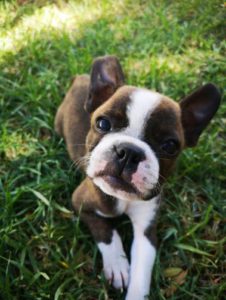
When in hesitation, more walks are always better than lesser walks. Keep your doggy walks in a short time.
If your puppy does not relieve in the first five minutes, bring them indoors, then try again after a while. Besides teaching your dog to get off using a vocal cue, it’s also nice to show them that when you let them out, they should do their business right away.
- Determine where your dog usually does it business
Without a doubt, dogs have a favorite spot where they want to pee and poop. Go with your dog in that spot immediately if you know that place. If not, try walking them in different surroundings, and in areas with as few interruptions as possible.
If you’re doing this method with your dog in an enclosed yard, rather than on a leash, keep him near eyesight while he finds his go-to spot.

- Wait for your puppy to finish.
The time your puppy starts relieving, say your verbal cue. You just have to say it once, and in the beginning, you’re only going to stay as your dog is doing their business, or you are sure that he is going to go in the next five seconds.
As time goes by, you’re going to start doing this routine more and more by saying it earlier and earlier.
Most dogs give some kind of signal that they are going to pee. Some will run around in circles; others will start sniffing.
The more you work at adding a visual cue to the behavior, the quicker and easier you’ll get at telling that they are about to go, and the earlier you will be able to say your cue word.
- Positive reinforcement is equal to a positive result.
The moment your dog finishes going, give him some treats. Keep in mind that you don’t need to give your dog the treat while he is going. We should not distract him. Once they have completely finished their business, provide them with a treat for a job well done.

As soon as you have a dog that is eliminating in a spot you want, you can begin giving a verbal cue each time he goes.
How to Train Your Puppy to Get Off Outdoors
Now that we have established the basic guidelines let us now proceed with the first method, teaching your puppy how to pee outdoors.
1. Choose an area outdoors that is easy to get to quickly. You and your dog will be visiting this area regularly during the potty training.
2. When taking your dog outdoors, it’s recommended to keep it on a leash so you can lead them in going to that specific location. You can also more easily check on your dog, so you’ll know when it is done.
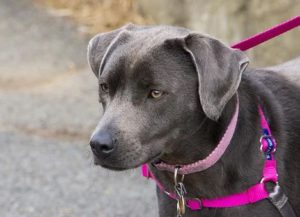
3. Every time you take your puppy out to the specified area, use a specific command word such as “go.” This will trigger their stimulus that they are required to go in that area to release themselves.
How to Potty Train a Puppy Using the Indoor-to-Outdoor Method?
If your home does not have a yard, it may be a great idea to begin potty training indoors and then switch your pet on getting off outdoors.
To start potty training your dog to relieve themselves in the correct place inside your home, you will have to learn how to potty train a puppy fast using pee pads, or how to get started with potty training using the crate method.
How to Potty Train a Puppy on Pee Pads?
Dog pee pads also called potty pads and training pads, are sheets of absorbent material that are used to soak up any puppy mess such as pee and waste. Here’s how you can use this method:
1. Determine a designated area to begin indoor training—like the bathroom or the laundry room. It is advisable to select a place tiled floor, which is easy to clean and mop.
Make sure it’s dog-proofed, and all harmful chemicals are out of their reach. Then, set up the designated potty spot by covering the floor with pee pads and putting your pet’s bed in the corner of the said room.

2. Change pee pads regularly but place a small piece of the used pee pad on top of the clean pee pad in the area you want your puppy to pee. The previous scent of their urine will remind your puppy that this area is where he can get off or pee.
3. Remove the pee pad that is closest to their bed once your puppy is peeing in the same area. This is to avoid them mistaking their bed as an area they can pee.
4. Keep on removing the pee pads until there are just one or two pee pads left in the designated pee area.
5. If accidents begin to occur, lessen the area where you put the pee pads. For pet owners who plan to switch their puppy’s potty training to an indoor or patio grass “potty,” migrate the papers near this spot. Now, you’re all set to teach your puppy a potty cue so they can get off themselves outdoors.
How to Potty Train Your Puppies on Crates?
When your puppy has known their crate as their living space, crate potty training should start. Instead of soiling the area where they eat and sleep, they’ll let you know they need to go out to pee. Like other potty training methods, developing a routine is vital.

1. Before you start with crate potty training, you need the right size of the crate. Keep in mind that your puppy only needs sufficient space to stand, turn around, and lie down. Any more space will encourage them to relieve themselves in multiple corners and sleep in another. Some crates even come with partitions so you can change the size as they grow.
2. To get your puppy familiarized with their crate, leave a treat inside, and allow them to go inside and come back out. Give positive reinforcements to your puppy each time they enter, such as a pat on their head or a simple “good boy.” Work your way up to your pet that can stay in the crate for 10 minutes and then longer once they’re at ease.
3. It is recommended to keep your puppy in the crate overnight and during the day for periods at a time. Your furbaby will let you know that they have to pee by whining and to scratch the crate. On the other hand, take your pup out frequently to release themselves, at which point you could use the potty cue in a designated spot and reward accordingly.
4. In about fifteen minutes of eating, drinking, or playing, your dog should have the chance to relieve themselves.
5. In instances that you have to leave your pet at home, limit them to a specific area in your home in its crate. Any time you cannot oversee your puppy, he should be in a crate, or in a smaller room behind a dog fence. This helps avoid accidents in your bedroom, living room, or any other areas when you are not there to hear or see the potty cue.
What If I have to Work and I need to Leave my Puppy at Home?
With our busy lifestyle, it is expected for us to go to work and leave our puppy at home for some time. Leaving our furbabies home alone for sustained periods isn’t frowned upon.
It is not dangerous, and it’s essential for them to adjust to some separation from you. In this section, you will find out about what to keep in mind when you’re leaving a puppy home alone.
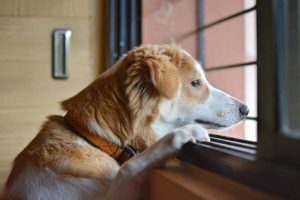
How Long Can Your Puppy Hold Their Bladder?
Adult dogs usually need to pee between three to five times daily. But puppies need pee breaks more frequently. Here are the average time limits for puppies of different ages: (as mentioned before, keep in mind that these vary depending on your puppy/dog breed)
- 8 to 10 weeks: One hour or less. Puppies at this young age simply cannot hold their bladder for more than an hour. It is recommended to start crate training at this age, but you can’t leave a young puppy in a crate for longer periods.
- 10-12 weeks: Bladder capacity is getting bigger, but 2 hours is still the best time that most puppies can hold it at this age.
- 3-6 months: At this age, start using the “one hour per month rule.” Three months old puppies can wait for three hours, four-month-old puppies for four hours, and so on.
- After six months: An older puppy, similar to most adult dogs, has the capability to hold it for up to six hours. If you don’t have a doggy door, be sure to go home at lunch or get your trusted dog walker to pay a visit if you’re unable to do so.
The above estimations can vary depending on your puppy’s size, health, and habits. But any dog enforced to hold their pee for too long is at risk for stones, crystals, or urinary tract infection. Like what we humans experience, holding the bladder for too long is uncomfortable and can lead to unwanted accidents.
How Long Can You Leave Your Furbaby in a Crate?
Crate training is important, but just to set your expectations, it will take some time. Introduce your dog to the crate the first time with treats, with open doors. Don’t let them feel enclosed yet.
Give them playtime inside and near the crate. With this, they will begin to familiarize that area as a safe zone. Then bit by bit, build up to 15-minute intervals of crate time, staying with these short periods of time until your puppy has accustomed itself.
If your puppy can tolerate a shorter amount of time in their crate, leave them there for even more extended periods of time. In the long run, your dog will become comfy there.
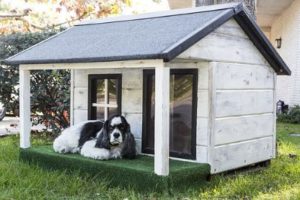
On the first days of crate training, it is never a good idea to leave them on their own in the crate for a couple of hours.
Avoid making them feel isolated and neglected in a crate. It is for you or for someone to visit them once in a while and give them some interactions.
To help you more, here’s a guide on the age and maximum daily time recommended in a crate:
8–10 weeks: 30–60 minutes
11–14 weeks: 1–3 hours
15–16 weeks: 3–4 hours
17+ weeks: 4–5 hours
An older dog can be kept in the crate for more periods of time. But always remember that it should still be used as a short-term solution. It’s vital that your dog gets lots of exercise and socialization.
What to Do If Accidents Happen?
One of the most important things you need to remember when it comes to potty training is that accidents will always take place.
Also, keep in mind not to get angry with your puppy. It’s highly not likely that your dog has done this on purpose, and getting angry will only make them afraid of you.
- Your puppies do not have full control over their bladder, but they can tell if they will have the need to pee. That’s what potty training is all about – teaching them how to hold their bladder and where they should be going off. It’s all part of the practice. To cut it short, accidents can happen without the dog, even being able to prevent or control them.
- Never shout, become angry, or give punishments to your dog for going in the wrong spot. It doesn’t teach your dog where to pee. However, it does teach them to be frightened about going near you, which makes training much harder. When accidents happen, just clean it up.
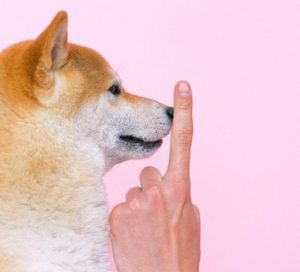
- Always use an ammonia-free cleaning solution and be sure that you clean it well when a puppy has an accident. If the area smells like the designated area where they pee to your puppy, they will just continue to use it as their potty spot.
- If you can see and hear that your puppy is giving potty cues in the wrong area and you’d like to avoid an accident, interrupt them in a calm and cheerful way and take them to the designated potty spot. A clap and a simple “no” will do. Remember to give them positive reinforcements or treats when they go.
A house-trained dog could also suddenly pee in the house due to medical or behavioral reasons.
What Cleaning Solutions to Use In Case Your Puppy Has An Accident?
In the case of your dog having a pee accident inside, stick to these guidelines when picking out a cleaning solution.
- Use cleaning products that have live-enzymes that break down the mess by your dog, rather than masking it with other fragrance.

- Never use ammonia-based cleaners as they’ll smell like urine to your dog, and they’ll want to pee again in the same place.
- Leave some soiled towels in your dog’s potty place. This odor reinforces for your dog that this is the potty area.
Cleaning Urine Stains
- Mop up the pee puddle as fast as you can, especially on garments and carpets. We want to avoid the urine to seep into the floor below the carpet, or else the pee smell will always be there.

- Use a sponge or paper towel to soak up the urine and make sure not to make the situation worse by dispersing the pee all over the surface.
- Getting the pee smell off is vital because the smell signals that the area is an acceptable pee area.
- There are many cleaning solutions available to eliminate pet stains and odors. These are usually enzyme digesters that will help to remove urine stains and odors altogether.
- Use a special carpet cleaner for pets.
Cleaning Fecal Stains
- The same steps above apply to fecal waste, with the exception of scooping up the fecal waste and disposing of it properly. The tricky thing to do is to scoop it all up without pushing any particles into a pile or dispersing it further than you have to. Try using a piece of flat cardboard, or you can purchase a waste shovel in your nearest pet store.
- Cover the area that you have applied the cleaning solution and step on it several times to make sure the area is well soaked. Leave the plastic sheet on, so the area won’t dry out before the digester has had time to work.
- Use absorbent materials such as paper towels and coffee filters to absorb the moisture. Then use a sponge with warm water to clean it thoroughly.
Cleaning Vomit Stains
- Dealing with vomit stains is very different, as it is very acidic. If not cleaned up quickly and well, discoloration of your carpet or your flooring may be compromised.
- You should clean the area with a professional carpet cleansing agent and then rinse it with hot water.
Traveling With Your Furbaby
In scenarios where you need to take your dog somewhere temporarily, it can be as short as going to the park or going to a pet-friendly hotel. Some more adjustments are needed before they can settle in their new environment.
Remember to allow them some bathroom break as often as you give yourself while traveling – as much as every couple of hours will do. Traveling on the road in a car is just as stimulating to your puppy’s bladder as it can be to its pet parent’s bladder.

Bring your puppy’s potty equipment with you: paper for the paper trainee, litter, and litter box. When you are going to let your dog for a walk, remember to bring a dog leash, a scoop, and a disposable waste bag.
When traveling with your furbaby, it’s recommended to bring along their crate. Most hotels will not allow dogs unless they’re inside a crate.
And no matter where you stay, the crate will give your dog a sense of familiarity in unfamiliar surroundings — and can help prevent pee accidents, too.
With this comprehensive guide on what is the best way to potty train a puppy, we hope that we have helped you and your furbaby in having smooth and easy training sessions.
Laura is the founder of Furs'n'Paws. She is a also a pet writer and expert with more than 20 years of experience of working with dogs and cats. She developed a very strong love for animals at a young age. Her passion led her to establish a thriving pet sitting and dog walking business in Dubai. As an expert in pet training, behavior, and nutrition, Laura is committed to helping pet owners and pet lovers by offering high-quality information on a wide range of topics.


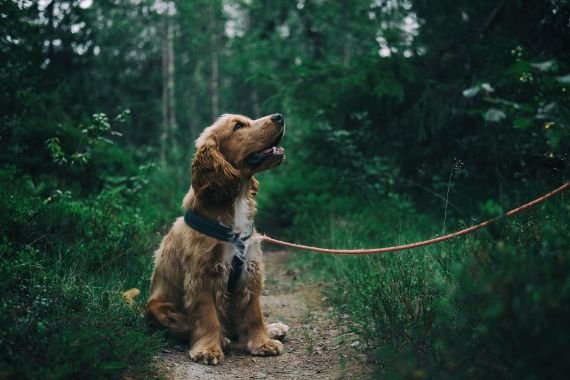
No responses yet